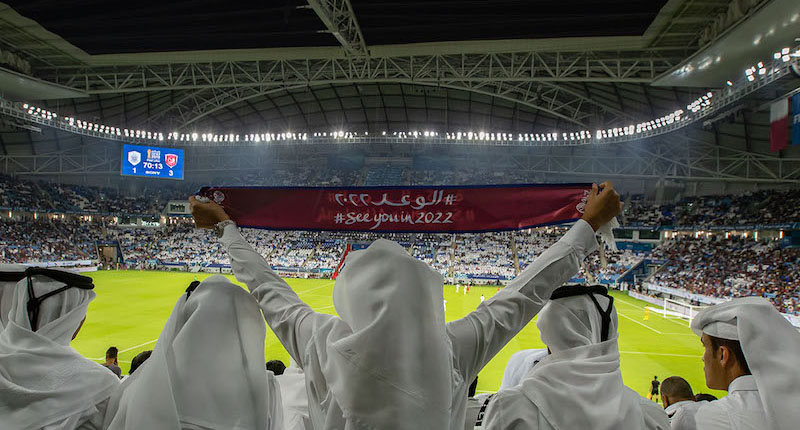As the FIFA World Cup 2022TM gets closer, Qatar gears up with impeccable planning and execution. Equipped with the latest technological advances and zeal for sustainable planning, work for the World Cup moves ahead with stadiums being constructed in different regions of the country.
Qatar has had a deep connection with football that dates all the way back to the 1940s. Throughout history, the country has displayed its talent on a local and international platform and continues to do so now.
Historically significant and an icon for the State of Qatar, Khalifa International Stadium is to be a crucial part of Qatar’s World Cup. Named after Khalifa bin Hamad Al Thani, the former Amir of Qatar, the stadium was built in 1976 and has long been a major part of Qatar’s sporting tradition. Reopened after a thorough renovation in 2017, this stadium is now ready to host 40,000 spectators, as they watch history be made.

Al Janoub Stadium in Al Wakra City opened to the public during the Amir Cup Final in 2019. Built to hold 40,000 spectators, this stadium will host matches up to the quarterfinals. With beautiful parkland and elegant architecture, the larger plan includes adding halls, restaurants, marketplaces and parklands to make this stadium more community friendly.

Al Rayyan Stadium’s stunning structure has been inspired by sand dunes, and has a capacity of 40,000 football fans. Stunning landscape surrounds the stadium complex with elements of the desert motif, such as dune-shaped hospitality areas and merchandise stalls. This stadium is a celebration of the region’s past as well as its future.
Representing the values and importance of the gahfiya, a traditional woven cap worn by males across the Arab world, the design of Al Thumama Stadium replicates a gahfiya, and has the capacity to hold up to 40,000 spectators.
Education City Stadium, amidst leading universities, sets the standards for a modern, cutting-edge stadium. The ultra-modern curves of this venue are meant to encircle fans to keep the atmosphere balanced in the arena, all through to the quarterfinals. Fans will see many green areas and state-of-the-art amenities around the stadium.

A truly sustainable arena, Ras Abu Aboud Stadium will host 40,000 fans in a smart arena made with shipping containers, removable seats and other basic building blocks. This stadium will be completely dismantled post-tournament to be used by other sporting agencies and to allow residents to enjoy a beautiful waterfront. Matches will be held in this stadium up to the quarterfinals.

Al Bayt Stadium in Al Khor city, inspired by bayt al sha’ar, a traditional tent, is currently under construction. It will be a 60,000-seater arena and is set to hold matches up to the semi-finals. An ode to the traditional, nomadic tents, this stadium plans on making its upper seating removable after the tournament.
Inspired by the interplay of light and shadows representing a fanar lantern, Lusail Stadium will host 80,000 fans and both opening and closing matches will be held here. The shape and intricate details reflected in this stadium mirror the traditional decorations on bowls and vessels found throughout the Arab world.
The stadiums are accessible for all with priority parking, wheelchair ramps, and accessible seating. Renewable and low-energy methods are used for the cooling of the stadiums and are set to be self-sufficient. Transportation by air, rail, buses, taxis and water taxis will be available. Shaded walkways and cycling tracks are available too.
Planning with a sustainable future in mind, all the stadiums will be reduced in size after the World Cup – some of the extra parts will be used for other sporting arenas while some will be distributed globally to those countries in need of sporting facilities. The smaller stadiums will be useful for the strengthening of community relationships and will have added amenities.





